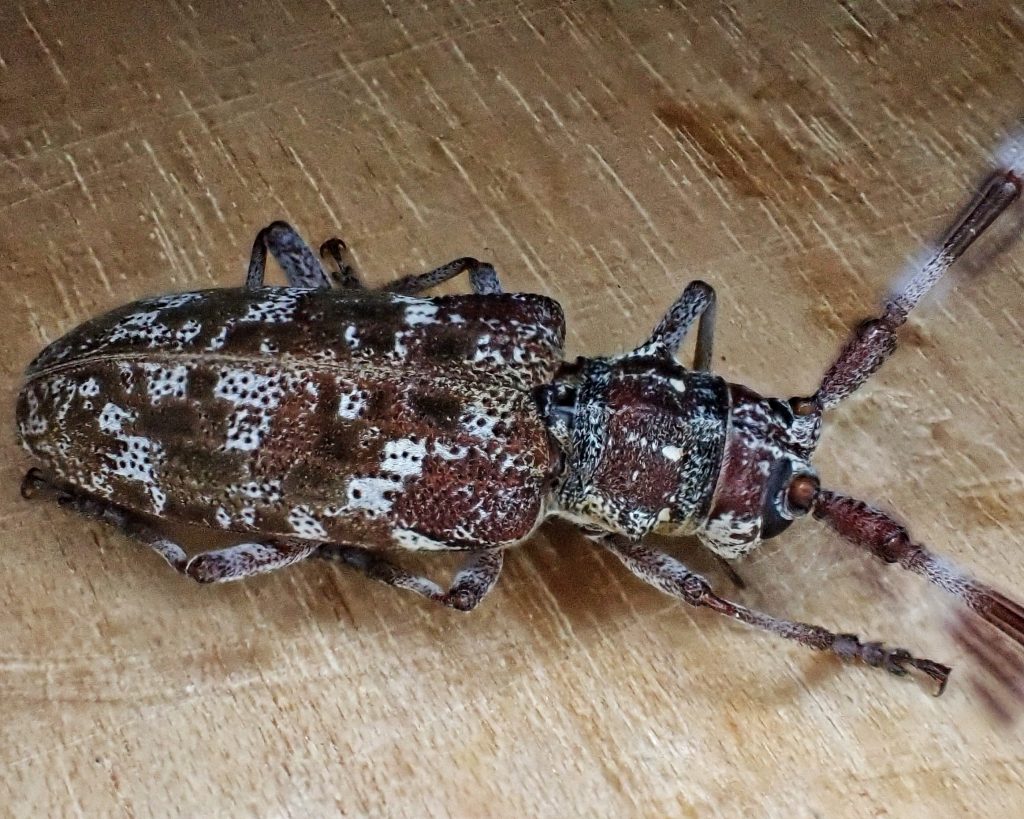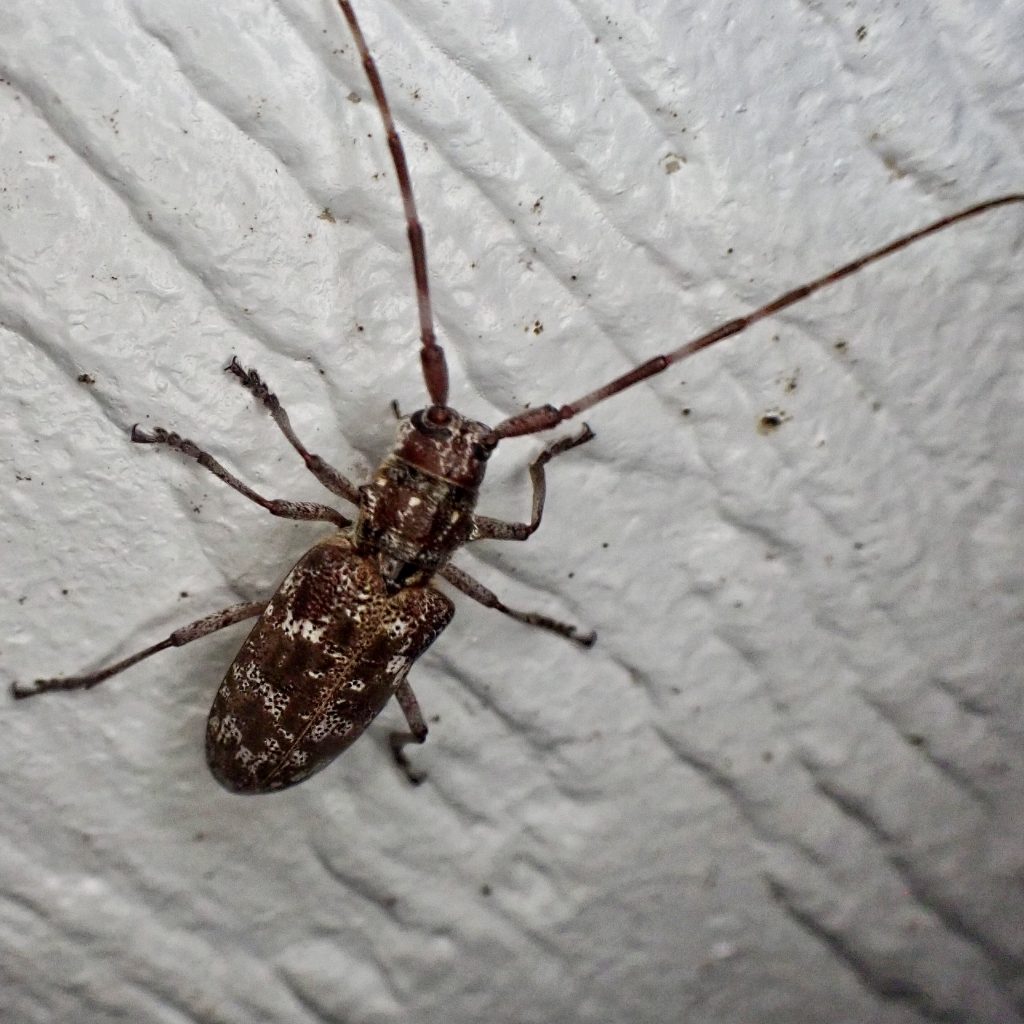
It is somewhat ironic to me that the first time I have found this interesting longhorn beetle, one that one would expect to find in the deep forest because of their larval reliance on decaying, dead, stressed, or sickly conifers, came whilst house sitting in the middle of the Portland metro area, albeit in a well forested portion of that city. I knew immediately that it was a Monochamus (the pine sawyers) but determining whether it was M. obtusus or M. clamator was a bit trickier, complicated by the fact that I didn’t look closely enough at Hatch’s key for this genus to realize that he had not skipped M. clamator, but instead had synonomized it with M. maculosus. I did eventually realize that mistake, and concluded that this beetle was Monochamus obtusus due to the evenly rounded apices to the elytra, which ended up being confirmed by a Cerambyidae expert on Facebook, where I had asked about resources to identify this genus. Some resources call this beetle the obtuse sawyer, but most give it no common name at all.
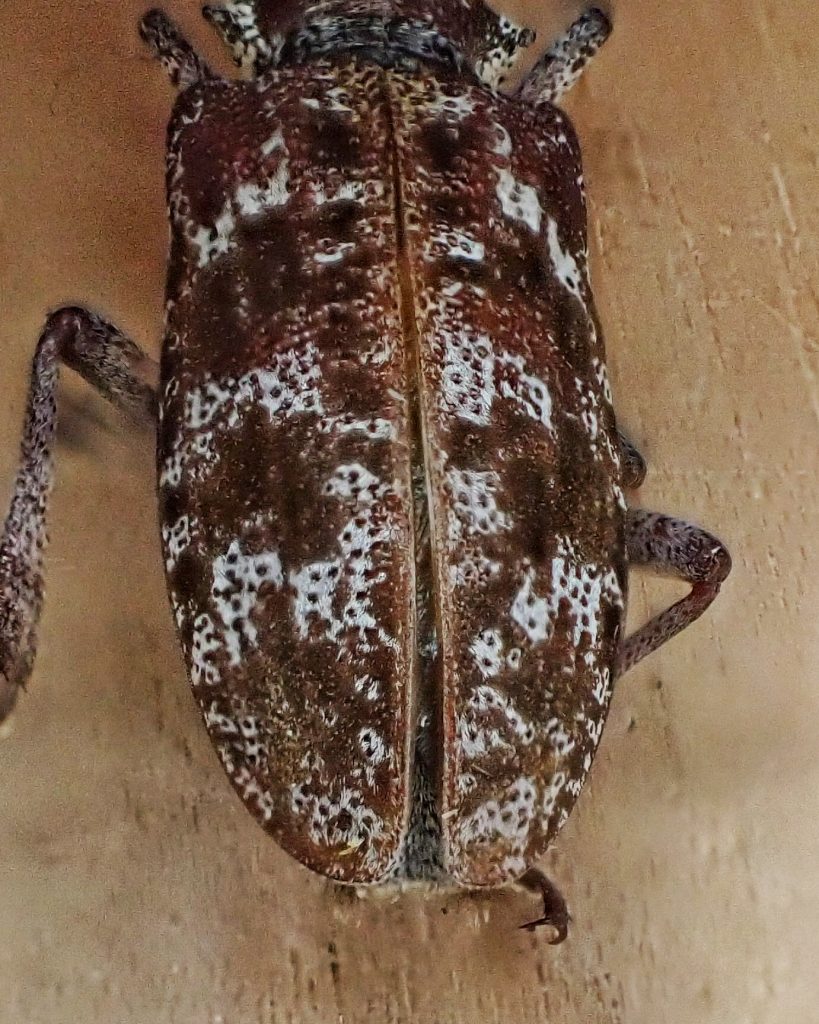
“Conifers that are severely stressed, dying, or recently killed are vulnerable to attack. The late-instar larvae produce excelsior-like frass, which is extruded to the surface and out of the gallery. These borings accumulate and form small piles below each gallery and are a clear indication of an infested tree or log. In the areas where the beetle populations are very high, adult feeding on the tender bark of conifer twigs results in twig death and produces what is often called ‘flagging’. Under extreme conditions, especially when the tree is already weak, adult feeding on the twigs and foliage can result in the death of the tree.” Monochamus obtusus (obtuse sawyer) | PlantwisePlus Knowledge Bank.
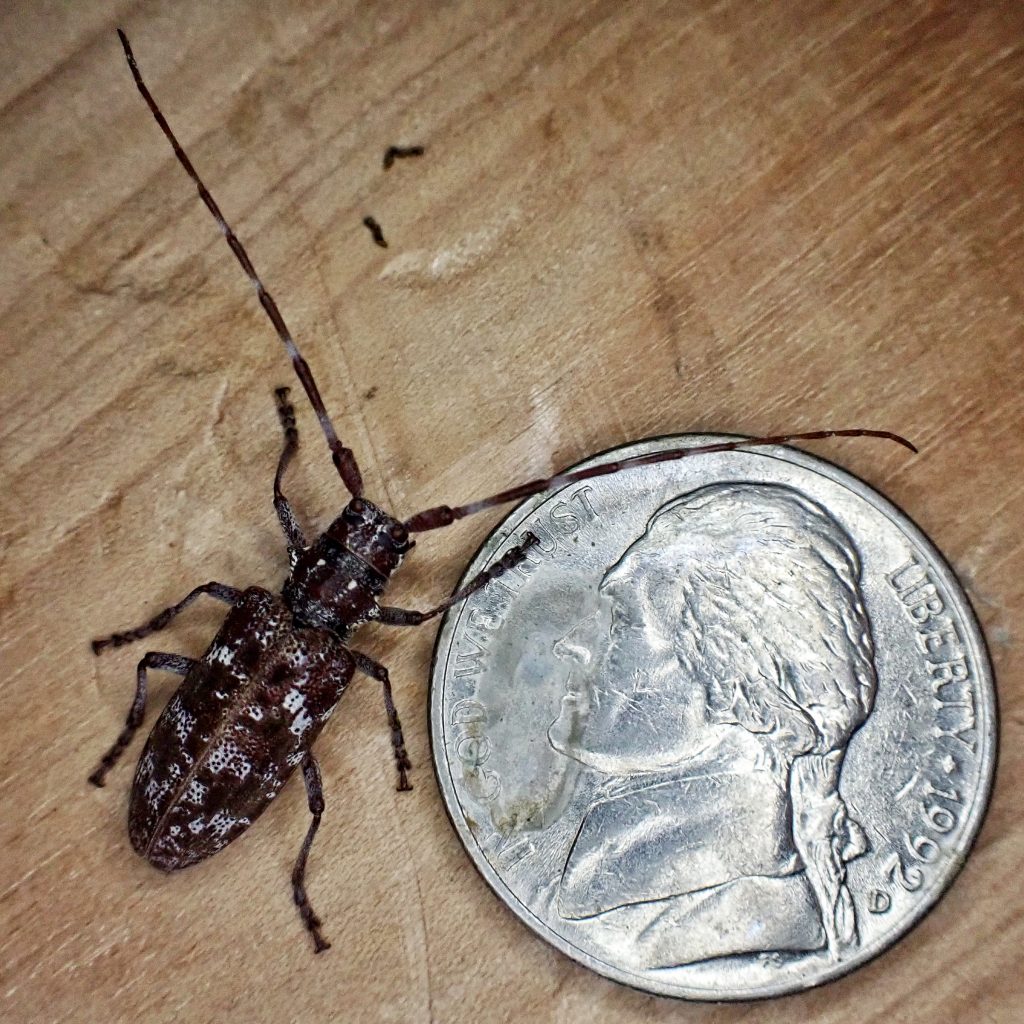
The other problem with the adults feeding on healthy trees is that they may introduce pine wilt disease (PWD). “The pinewood nematode (PWN), Bursaphelenchus xylophilus (Steiner and Buhrer 1934) Nickle 1970; is the causal agent of the PWD…During this time, PWN, if present on the beetle, exits the beetle trachea and enters feeding wounds in the bark. If the tree species is a susceptible one, the nematodes feed on the parenchymal cells lining in the resin canals, causing tracheid cavitation and disrupting water transportation within the tree. Susceptible trees almost always wilt and die as a result of damage caused by the nematodes…The nematode, native to North America, was accidentally introduced into Japan in 1905 (Mamiya 1988) and has become widely established in China, Korea and Taiwan.” https://zero.sci-hub.st/1066/05b26727d33190055ce91df601a68ce5/akbulut2011.pdf?download=true. Having evolved with these nematodes, North American trees have a certain amount of resistance to them, and are seldom deeply affected.
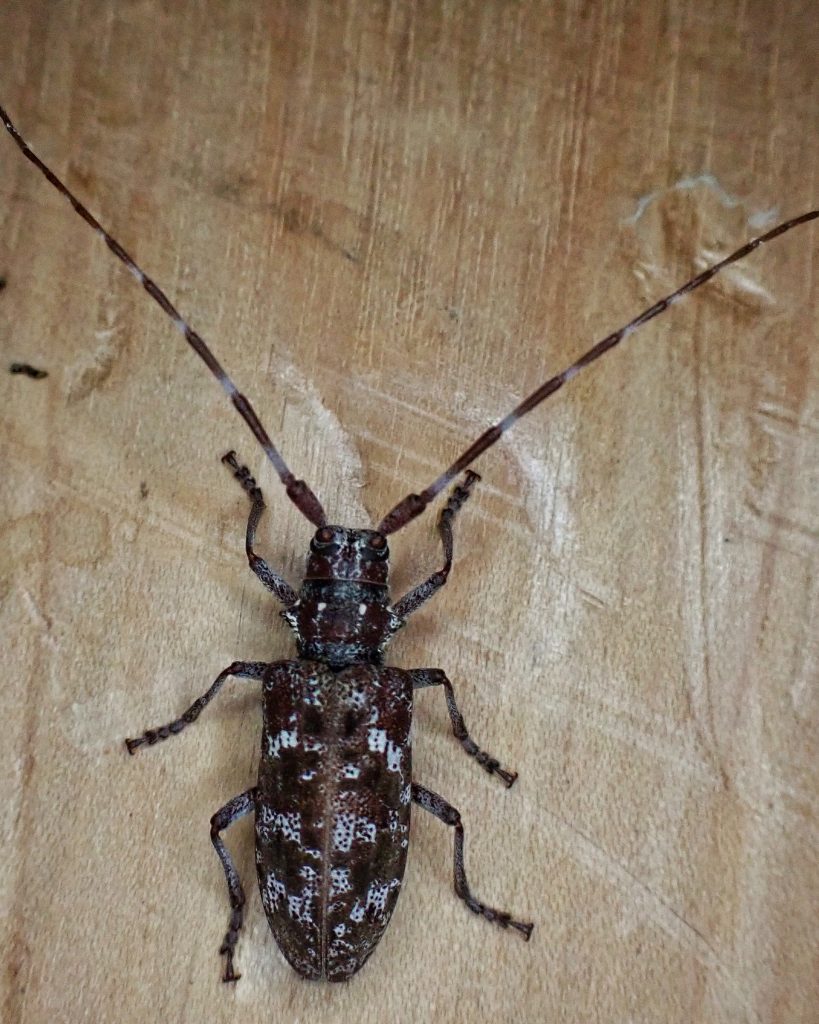
“Monochamus beetles are generally poor fliers, although in flight mill experiments, female M. carolinensis beetles have flown a maximum distance of 10 km with duration of 115 min (Akbulut and Linit 1999). In mark and recapture studies of the closely related beetle, M. alternatus, most beetles were recaptured within 100 m of the release site in one study (Ogawa and Hagiwara 1980). The majority of beetles remained within 800 m of their origin, although some flew up to 3.3 km (Kobayashi et al. 1984). Based on field observations, Togashi (1990) calculated the average distance an M. alternatus beetle moves during the first few weeks post-emergence is 10–20 m per week. Assuming an average field lifespan of 7 weeks, dispersal would range from 50 to 260 m. TogashiÕs (1990) analysis also suggested increased beetle dispersal with increased ambient air temperature and decreased stand density. Although no such studies exist for M. carolinensis, flight performance in the field is likely similar. Natural enemies of M. carolinensis have not been identified. Laboratory studies and experiments with logs maintained in outdoor cages showed that within-log generation survivorship of M. carolinensis and also of M. titillator (Fabricius) ranged from 6 to 15% (Alya and Hain 1985; Linit 1985; Akbulut et al. 2004). The high mortality of beetles within the logs suggested that either intraspecific competition among M. carolinensis larvae and ⁄ or interspecific competition among M. carolinensis and other beetle species occurred within logs. Competition was proposed as the mechanism of mortality because no other mortality factors were observed in larvae, i.e. no diseased larvae or larval remains were found, and no predators or parasites were observed in any of the studies (Alya and Hain 1985; Akbulut et al. 2004). The number of adults emerged per log was not related to the number of eggs laid but the late larval and adult numbers were significantly correlated with log size. Only 12% of the initial cohort completed development and emerged as adults. The high within-log mortality of beetles may be attributed to intraspecific competition and cannibalism (Akbulut et al. 2004).” https://zero.sci-hub.st/1066/05b26727d33190055ce91df601a68ce5/akbulut2011.pdf?download=true
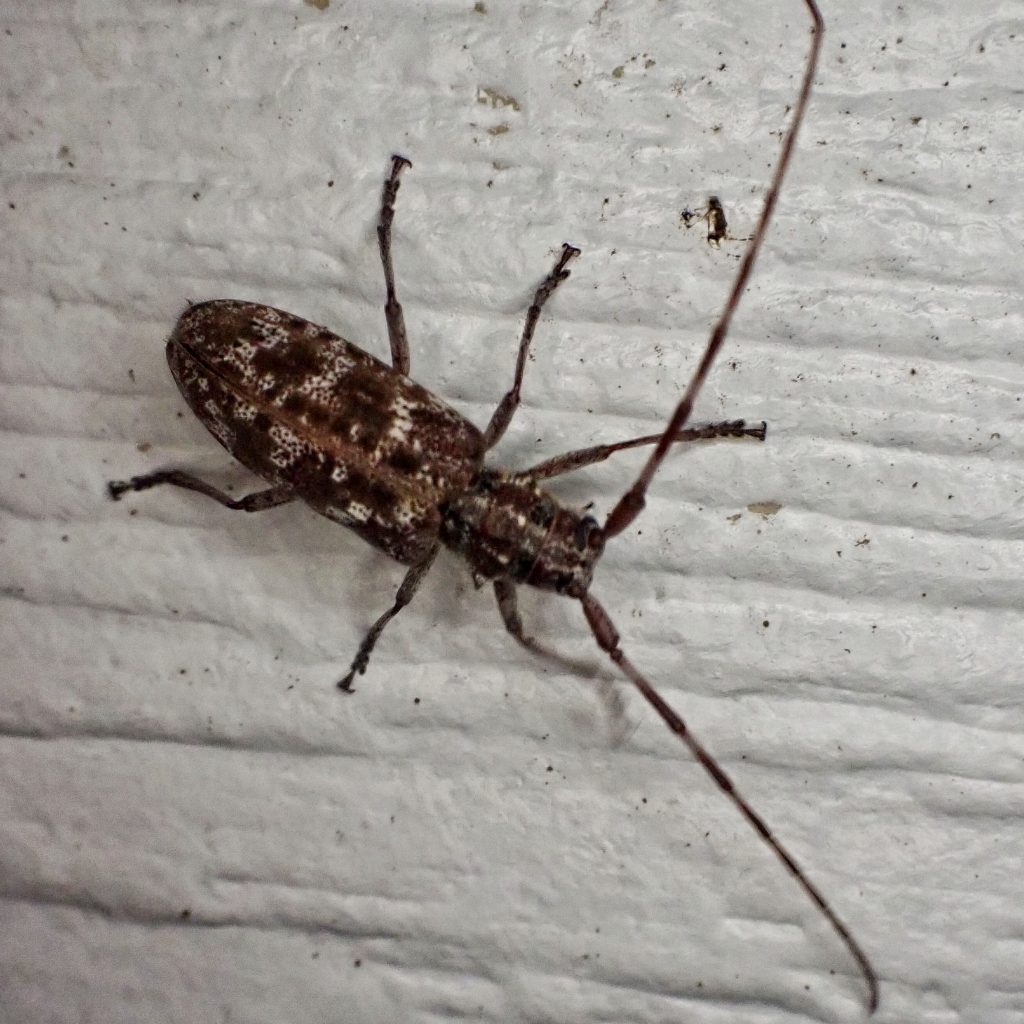
Description– Medium sized (14-24mm, without antenna) beetle with reddish brown and black integument (the ‘skin’ layer) that has mottled white, greyish, and black pubescence; pronotum with a pronounced spike on each lateral margin; antennae in males extend about 5 segments past the elytral apex, and 2-4 segments past it in females; apices of elytra are smoothly rounded.
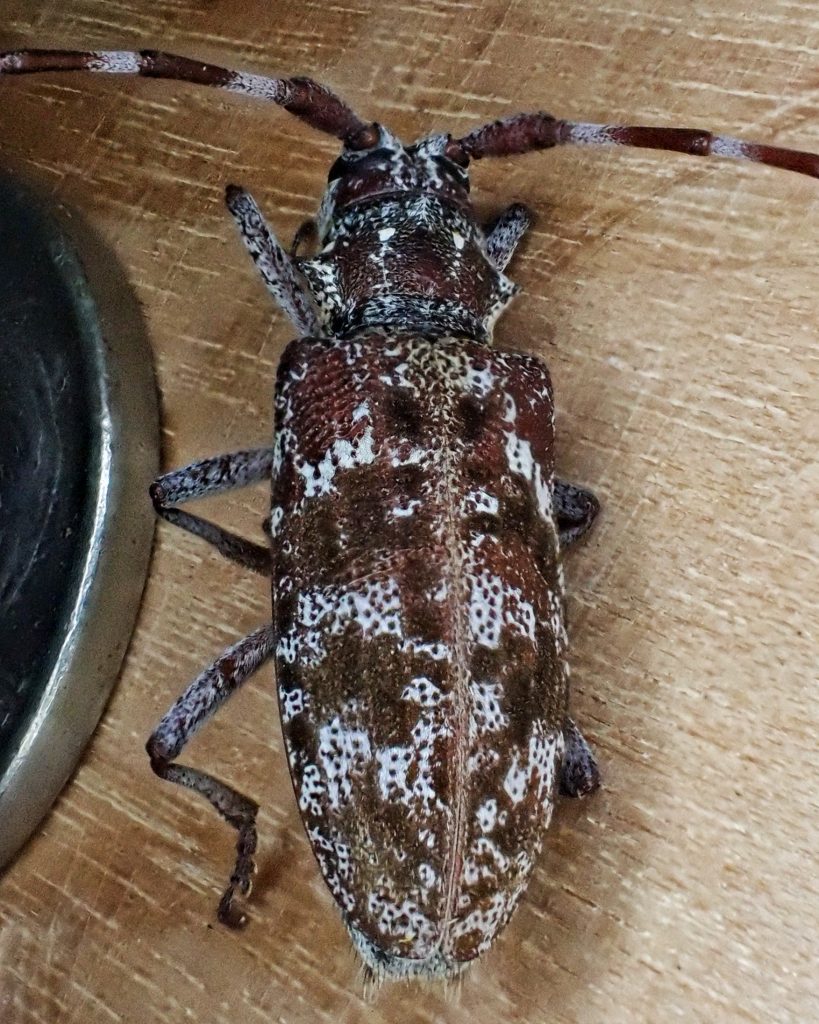
Similar species– Monochamus clamator has a rounded projection at the elytral apex, and in our region tends to have black integument.
Habitat– Conifer forests
Range– Western North America; region wide in the PNW in appropriate habitat.
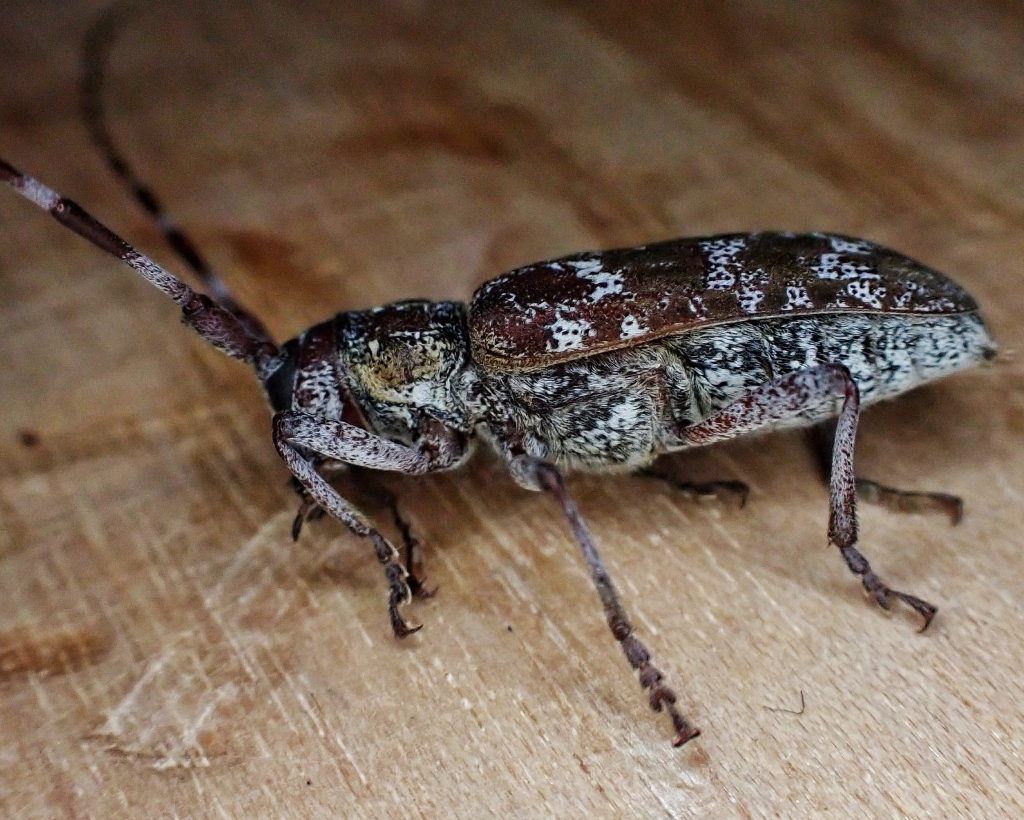
Eats– Larval hosts include dead and dying Abies concolor, Abies grandis (Grand Fir), Pinus ponderosa (Ponderosa Pine), Pinus contorta (Lodgepole Pine), Pinus lambertiana, Pseudotsuga menziesii (Douglas-fir), and probably other conifers as well.
Eaten by– Larvae seem to have surprisingly few parasitoids; adults and larvae are presumably preyed upon by any insectivore ( primarily birds) which can catch and subdue them; I would guess that larvae are particularly sought after by woodpeckers of most genera.
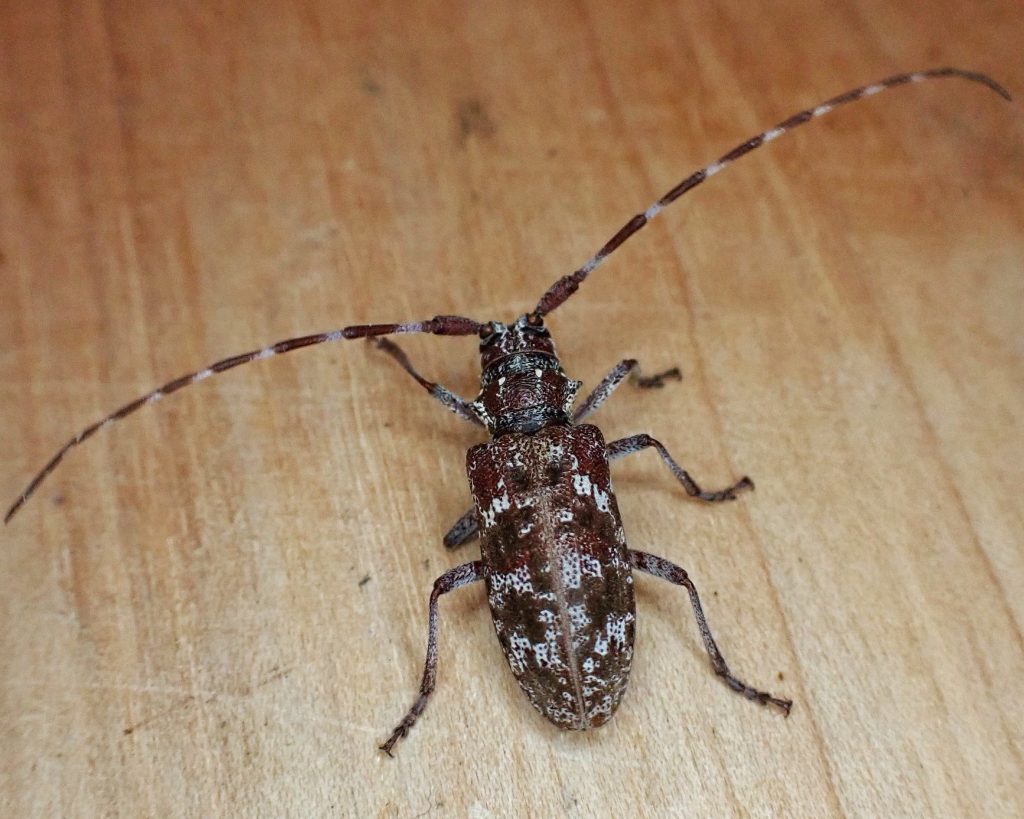
Life cycle– I can’t find specific information for the life cycle of Monochamus obtusus, but it is thought to be similar to that of M. carolinensis, which is described here; “Beetles feed on healthy trees for 10–14 days (maturation feeding). Nematode may be transmitted at this time. After maturation feeding, sexually mature beetles fly to dead or stressed pine to mate and oviposit during the night. After mating, the female deposits an egg below the bark (Walsh and Linit 1985). The oviposition wound can be slit like or pit like, and multiple eggs can be laid in a single wound, although oviposition sites generally contain only one egg (Walsh and Linit 1985). Nematodes may enter oviposition wounds at this time and feed on fungus present in the stressed or dying pine (Fig. 3). The beetle egg hatches and the larva feeds on the inner bark, cambium and outer sapwood (Fig. 4) (Linit 1988). Monochamus carolinensis has 3–8 larval instars prior to pupation (Pershing and Linit 1986a). The insect pupates in a chamber in the woody tissue near the cambium layer (Linit 1988). The adult encloses within the pupal chamber and remains within the chamber for several days before exiting the tree. It is at this point that the dispersal form of the PWN exits the surrounding wood tissue, crawls onto the body of the insect and enters the spiracles and trachea for transportation to new tree hosts. Monochamus carolinensis overwinters most commonly as a larva, although eggs and pupae overwinter as well (Pershing and Linit 1986a). The beetle emerges as an adult in the spring and early summer by chewing a round exit hole in the wood and bark (Fig. 5). The life cycle of M. carolinensis appears to be temperature dependent with the insect taking 2 years to complete development in the northern United States, but having two generations per year in the southern United States (Table 1). Total development time from oviposition to emergence averages 8–12 weeks, allowing more than one generation per year if the climate is favourable (Pershing and Linit 1986b). https://zero.sci-hub.st/1066/05b26727d33190055ce91df601a68ce5/akbulut2011.pdf?download=true
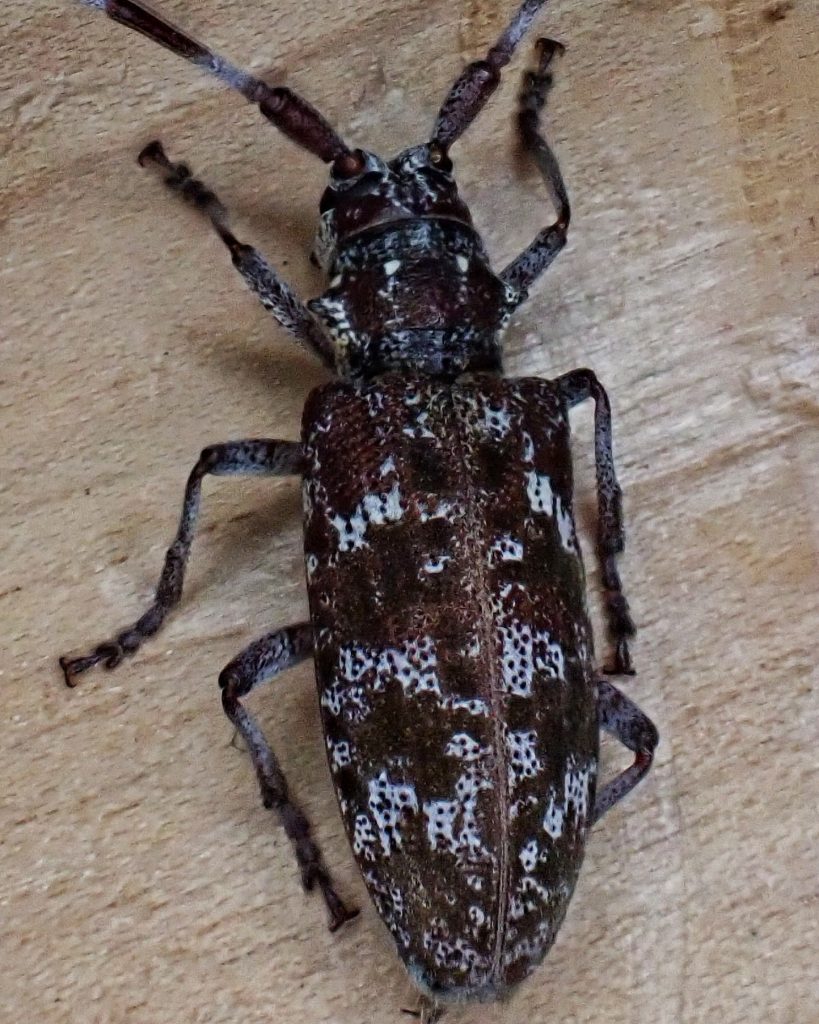
Adults active– June into September
Etymology of names– Monochamus is from the Greek words for ‘one/single’ and ‘rein/bridle’, but I cannot ascertain what this refers to. The specific epithet obtusus is from the Latin word for ‘blunt/make dull’, but Casey gives no explanation of what this refers to in his original description. “ The common name ‘sawyer beetle’ for Monochamus species refers to the sound the larvae make when feeding within the tree – a saw-like rasping sound.” https://zero.sci-hub.st/1066/05b26727d33190055ce91df601a68ce5/akbulut2011.pdf?download=true
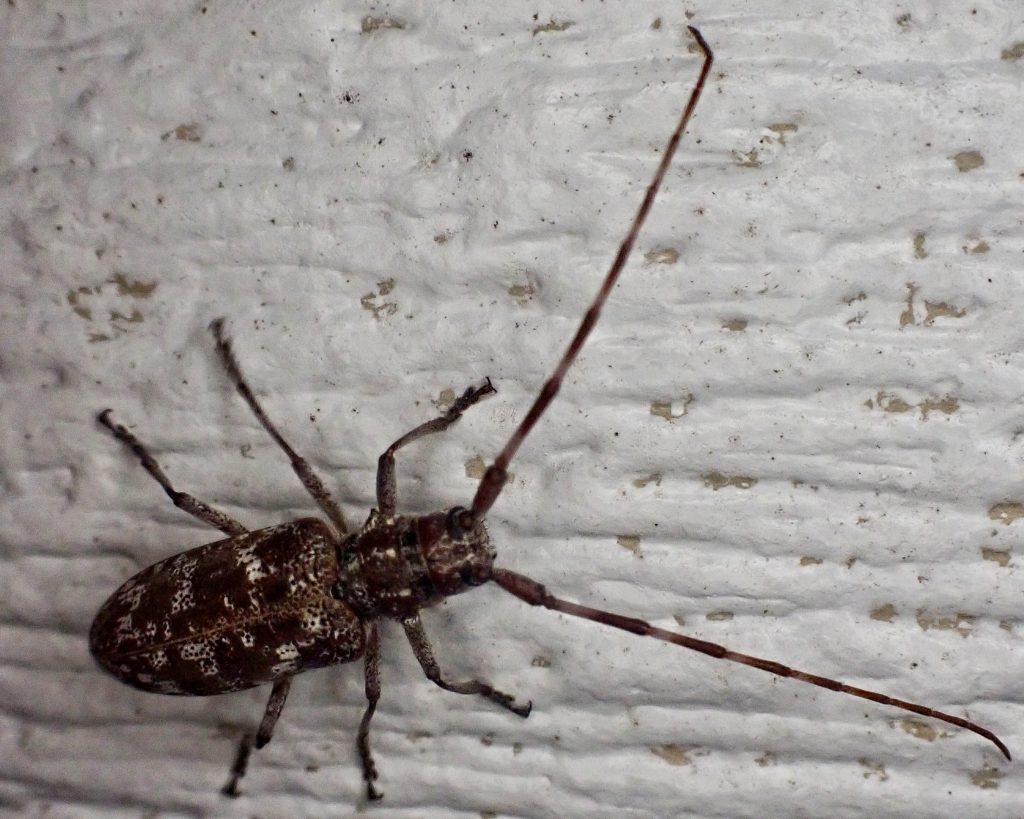
Monochamus obtusus (obtuse sawyer) | PlantwisePlus Knowledge Bank
Species Monochamus obtusus – BugGuide.Net
Monochamus obtusus | CerambycID
https://zero.sci-hub.st/1066/05b26727d33190055ce91df601a68ce5/akbulut2011.pdf?download=true
